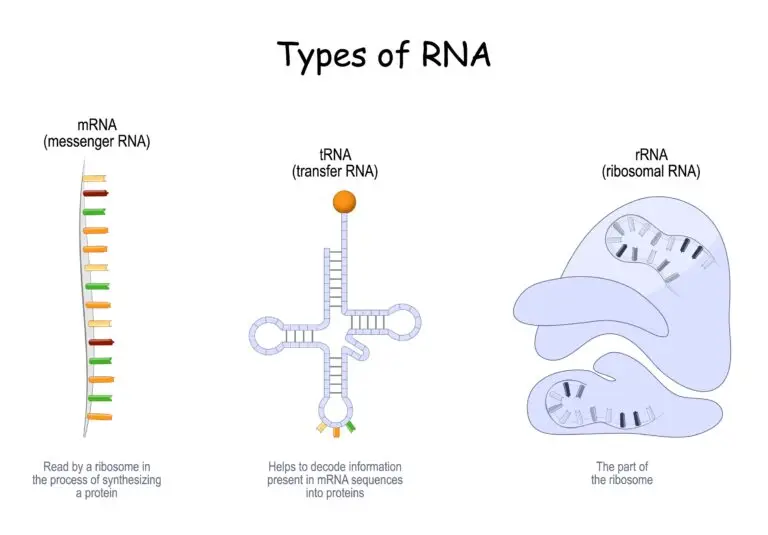RNA

Table of Contents
What is RNA
RNA, or Ribonucleic Acid, is a nucleic acid that plays a crucial role in various cellular processes, including the transmission of genetic information and the synthesis of proteins. It is involved in the flow of genetic information from DNA to protein, serving as an intermediary molecule in the cell.
Features of RNA
Composition
RNA is composed of nucleotides, similar to DNA. Each nucleotide consists of a sugar molecule (ribose), a phosphate group, and one of four nitrogenous bases: adenine (A), uracil (U), cytosine (C), and guanine (G). Unlike DNA, which has thymine (T) as a base, RNA has uracil (U).
Types of RNA
There are several types of RNA, each with distinct roles in cellular processes:
- Messenger RNA (mRNA): Carries genetic information from DNA to the ribosomes for protein synthesis.
- Transfer RNA (tRNA): Transfers amino acids to the ribosome during protein synthesis.
- Ribosomal RNA (rRNA): A component of ribosomes, where protein synthesis occurs.
- Small Nuclear RNA (snRNA): Involved in RNA splicing during the processing of mRNA.
- MicroRNA (miRNA): Regulates gene expression by inhibiting mRNA translation.
RNA Transcription
Transcription is the process by which RNA is synthesized from a DNA template. In eukaryotic cells, mRNA is transcribed from DNA in the nucleus, and the RNA molecule carries the genetic code to the cytoplasm for translation.
RNA Translation
Translation is the process by which the information carried by mRNA is used to build a polypeptide chain (protein). tRNA brings amino acids to the ribosome, and the sequence of mRNA guides the assembly of amino acids into a specific protein.
RNA Role in Protein Synthesis
- mRNA acts as a temporary copy of a gene’s instructions, carrying this information from the DNA in the nucleus to the ribosomes in the cytoplasm.
- During translation, tRNA ensures that the correct amino acids are added to the growing protein chain based on the mRNA sequence.
Genetic Diversity
RNA viruses, such as the influenza virus and human immunodeficiency virus (HIV), use RNA as their genetic material, contributing to genetic diversity and adaptability.
Related Links
Dominant Traits
Genetic Code
Transciption
Translation